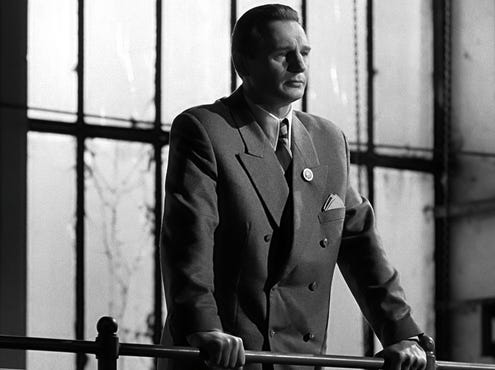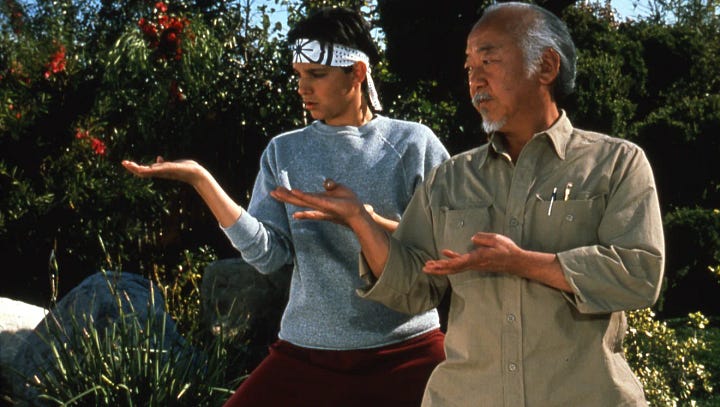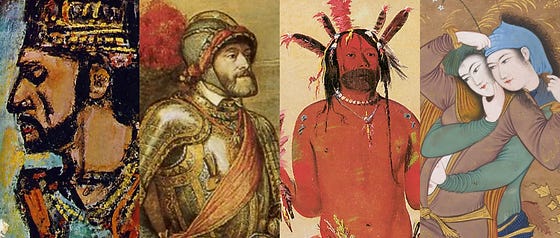Until recently, I hadn't given much thought to archetypes. I barely understood what they were, much less their subconscious impact on my life. However, as I've delved into the subject, I've come to realize that archetypes are universal symbols found across cultures and stories that can profoundly shape how we see ourselves. When it comes to masculinity, understanding male archetypes can provide a framework to highlight our strengths, pinpoint our weaknesses, and uncover aspects of masculine selfhood we still need to explore. In short, they can help us understand ourselves.
As I think about male archetypes and perceptions of masculinity from my youth, I reflect on the influence of cinematic characters that captured my imagination in those early years. Figures like James Bond, Maverick from Top Gun, and Rocky Balboa were iconic individuals whom I admired and, to some degree aspired to emulate. However, it wasn't until I read the book "King, Warrior, Magician, Lover" by Robert Moore and Douglas Gillette that I could see how the traditional 'Hero' archetype, although admirable and influential, distorted my youthful perception of aspirational masculine virtues. Instead, the book introduced me to the King, Warrior, Magician, and Lover that collectively shape a more nuanced, mature male identity.
Consider James Bond as an example, he's brave, strong, and relentlessly focused on achieving his mission, yet he's emotionally detached, rarely expressing or acknowledging his feelings. In "Top Gun", Maverick's immature hero energy prioritizes personal impressions over collective responsibility. Sure, he's courageous. But, his courageousness comes from a desire to be admired rather than from a genuine sense of duty or commitment. Additionally, heroes are often celebrated for winning monumental battles, a notion that overlooks the daily struggles and small victories that comprise real life. For instance, the climactic moments in the iconic "Rocky" boxing movies involve a dramatic showdown where the hero triumphs against insurmountable odds, with crowds cheering and celebrations ensuing (the ‘hero moment’). While these moments can be exhilarating and inspiring, they also perpetuate the idea that real-life achievements must be grandiose and publicly acknowledged, overshadowing the value of quieter, everyday victories.



The main issue with the hero is that he is trying to be the hero. He's unaware of his limitations, and his self-worth and sense of masculinity are hinged on how others see him. While his behavior may lead to a happy ending in films, ego-driven behavior is rarely rewarded in real life (at least not over the long term). More and Gillete describe the Hero as an archetype of 'boy psychology,' a phase in the journey towards mature masculinity, not the final destination. They propose that the fully realized masculine identity is shaped by a balance of the four distinct archetypes: the King, the Warrior, the Magician, and the Lover. The authors model challenges us to think about and define our ideals of masculinity, inviting us to explore the breadth of qualities traditionally left in the shadows of the Hero's spotlight. Each represents different aspects of masculinity, and collectively, they form the portrait of the mature masculine male to his fullest.
The King, embodying leadership and order, is decisive and centered. He is responsible, represents fairness, and creates harmony. His strength comes from his ability to make balanced judgments and lead with wisdom and kindness. Oscar Schindler (played by Liam Neeson) in the movie "Schindler's List" serves as an apt embodiment of these King characteristics. Based on a true story, Schindler is a businessman who gradually becomes the savior of over a thousand Jews during the Holocaust. His transformation from a self-interested entrepreneur to a compassionate and sacrificial leader aligns with the King archetype, as he creates order and safeguards his 'people’.
The Warrior symbolizes action and determination. He is mindful, disciplined, and adaptable, constantly aware of his limitations. The Warrior is courageous and resilient; he's strategic and doesn't shy away from challenges. He is fueled by a sense of duty and personal commitment to his cause. John Keating, the passionate English teacher from "Dead Poets Society," exemplifies these traits. Through his teachings, he inspires his students to seize the day and challenge the status quo. His courage, conviction, and dedication to his students embody the Warrior archetype.
The Magician is the archetype of knowledge and understanding. He's insightful and intuitive, able to read people and situations with a depth that often escapes others. The Magician serves as a guide, a mentor who helps others to navigate through the complexities of life. He values wisdom and the pursuit of knowledge, always seeking to understand the world and his place in it. The Magician's attributes are mirrored in Mr. Miyagi from "The Karate Kid." As a mentor, Mr. Miyagi imparts wisdom and skills to the young Daniel LaRusso, embodying the Magician archetype through his guidance and transformative teaching.
The Lover represents passion and emotional connection. He's empathetic, in tune with his and others' emotions, and aesthetically conscious. The Lover appreciates beauty in all its forms and cherishes authentic connection with others. His strength lies in his passion and his ability to feel deeply. Rick Blaine from "Casablanca" reveals the essence of the Lover archetype. Demonstrating passion, romance, and emotional depth. His decisions are motivated by love and personal relationships, as he sacrifices his happiness for his love interest.




As we move beyond the hero and delve into these additional archetypes, we must remember that the King, Warrior, Magician, and Lover are not isolated but interconnected, each possessing its strengths and weaknesses, light and shadow aspects. The shadow aspects, if not acknowledged, can undermine the individual's growth (I intend to delve deeper into these aspects in my following writing on this subject). Embracing this richness allows us to defy narrow definitions of masculinity, creating space for the King, the Warrior, the Magician, and the Lover within us to coexist, cooperate, and contribute to our growth and maturity as men.
Even though there's an undeniable allure to the exciting tales of heroes, I've realized that heroism isn't confined to monumental victories. It's present in the consistent resilience of the Warrior, the astute wisdom of the Magician, the empathetic connections forged by the Lover, and the responsible leadership of the King. Studying the mature masculine archetypes and how they are portrayed in various films, helped me better understand specific male qualities I admire, which qualities I can lean into more naturally, and which I would like to develop. Additionally, these symbolic figures permit me to explore aspects that may have lain dormant or obscured due to distorted views of masculinity, some of which may have come from the hero characters I admired. And, while we all love a great hero story, we don't need to chase any hero moments. Like 'all the children say, we don't need another hero.' We are 'looking for something we can rely on.' We should rely on the King, Warrior, Magician, and Lover to show up instead.
“All the children say
We don't need another hero” -Tina Turner





So interesting and enlightening